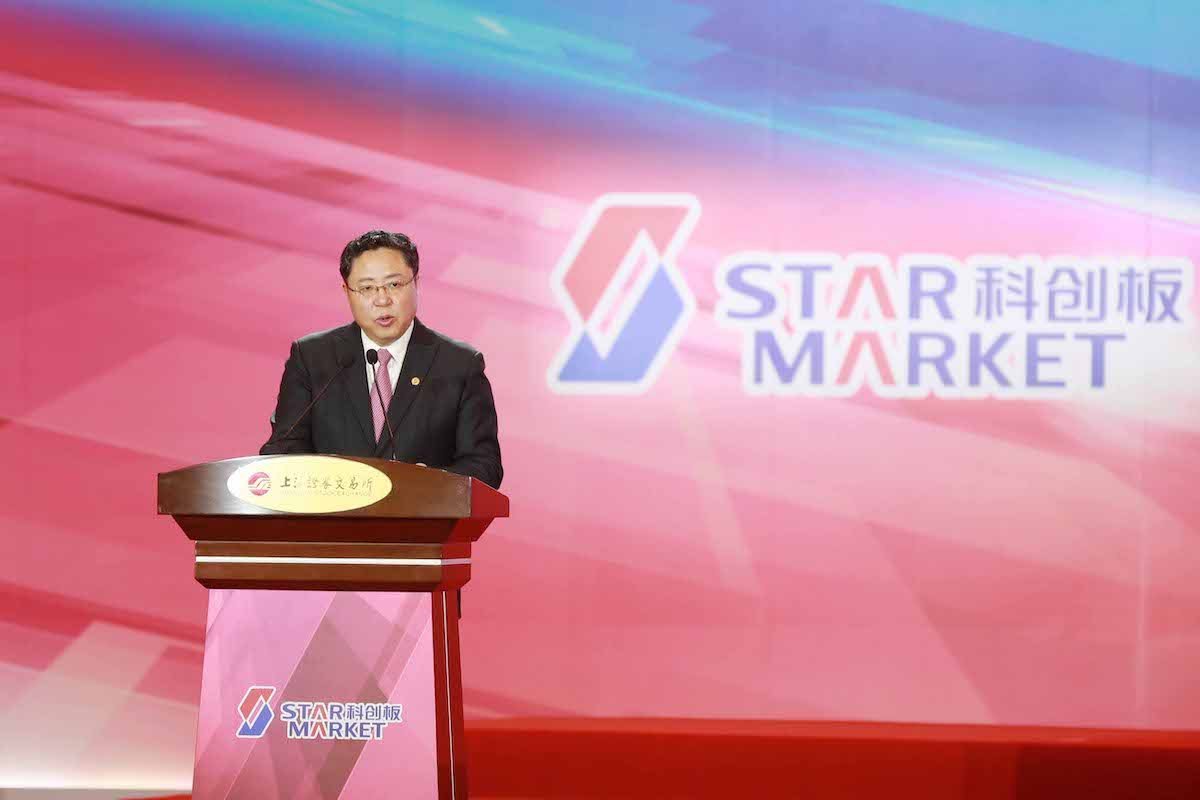[ad_1]
London-based securities benchmark provider FTSE Russell decided to add 129 A-shares to its Global Equity Index Series, including 11 shares from the Shanghai Stock Exchange’s Star Market, effective from March 22 this year.
This is the first time Star Market shares were included in a global index. FTSE Russell said overseas investors were eager to add Star Market shares to their portfolio, which is why the benchmark provider took the lead in the inclusion among other international index providers.
The inclusion will attract about US$100 million of incremental funds for Star Market shares, said Du Wanming, director of Index Policy, Asia-Pacific at FTSE Russell.
The eligible 11 Star Market shares are: Raytron Technology, Zhejiang HangKe Technology, Montage Technology, China Railway Signal & Communication, Advanced Micro-Fabrication Equipment (China), Anji Microelectronics Technology (Shanghai), Western Superconducting Technologies, Qingdao Haier Biomedical, Shanghai Junshi Biosciences, CanSino Biologics and Shanghai Haohai Biological Technology.
Support for rural workers
China unveiled its “No 1 central document†for 2021 on Sunday, stressing efforts to comprehensively push forward rural vitalization and accelerate the modernization of agriculture and rural areas.
As the first policy statement released by China’s central authorities each year, the document is seen as an indicator of policy priorities. Work on agriculture and rural areas has been high on the agenda for 18 consecutive years since 2004.
During the 14th Five-Year Plan period (2021-2025), the Communist Party of China will regard work concerning agriculture, rural areas and farmers as its top priority, said the document.
“China will make the comprehensive advancement of rural vitalization a major task in realizing the great rejuvenation of the Chinese nation, and will speed up the modernization of agriculture and the countryside with the efforts of the whole Party and society,†according to the document.
The document clearly lists the targets and tasks concerning agriculture and rural areas for 2021, as well as a broader vision for the period up to 2025.
Light industry
China’s light industry registered higher profits but lower revenue in 2020 with the sector’s production and operation gradually recovering, according to the Ministry of Industry and Information Technology (MIIT).
Some 108,700 companies with annual revenue of more than 20 million yuan (US$3.09 million) raked in 1.33 trillion yuan in profits last year, up 3.6% year-on-year.
The operating revenue of these companies totaled 19.47 trillion yuan in 2020, dropping 1.7% from a year ago. The decline in revenue narrowed month by month with the sector’s overall operation continuing to improve, the MIIT noted.
MIIT data also showed the value-added industrial output of the sector dipped 0.8% year-on-year in 2020. Exports of the sector’s eight major products stood at $362.1 billion last year, representing an increase of 7%, according to the General Administration of Customs.
Company news
Huaxia Bank, a medium-sized Chinese lender, saw its net profit in 2020 drop 2.88% year-on-year to 21.28 billion yuan, according to its preliminary earnings estimate.
Revenue rose 12.48% to 95.31 billion yuan. The bank’s non-performing loan ratio stood at 1.8% in 2020, down 0.03 percentage points from the end of 2019, the bank said.Â
Chinese mobile phone companies are becoming shareholders of domestic chipmakers to secure semiconductors at a time when China-US political friction makes US supplies very unreliable for Chinese phone vendors.
In one recent example, Xiaomi and Oppo became shareholders of Jiangsu Changjing Electronics Technology Co, a semiconductor maker based in East China’s Jiangsu Province, according to China’s company information website qcc.com.Â
The qcc.com data showed that Jiangsu Changjing’s registered capital surged by 12.67% to 357 million yuan after Xiaomi, Oppo and seven other companies became shareholders.Â
The stories were compiled by Nadeem Xu and KoKo and first published at ATimesCN.com.
[ad_2]
Source link













